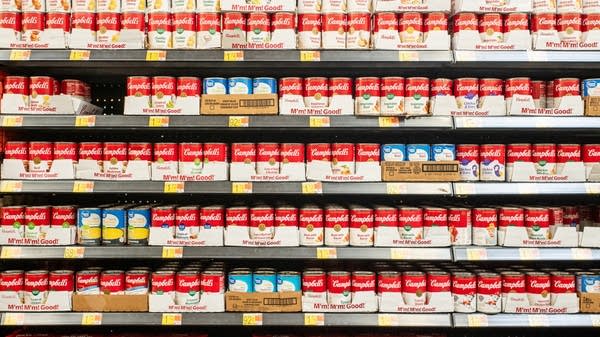Small businesses struggle as tariffs on Chinese goods disrupt supply chains
Entrepreneurs who depend on imports from China have some big — and potentially expensive — decisions to make.

It’s been one month since President Trump announced tariffs on goods imported from China. In the days since then, those tariffs have gone up — they now sit at 145%. A month of these tariffs is long enough to disrupt each part of the supply chain, from manufacturing to shipping to retail shelves.
On April 8, Danny Muskat at footwear company Deer Stags had $1 million worth of inventory — around 100,000 pairs of men’s boots and dress shoes — sitting in a factory in China.
“We were just getting set to put a lot of our goods on the water for the back-to-school period,” he said.
On April 9, the import taxes on the shipment went from $60,000 to more than $1.5 million.
“It’s, it’s not possible. You know, obviously we just can’t pay it,” Muskat said.
So the shoes are still sitting in China. And that’s where they’ll stay for a while. Muskat is hoping the tariff rate comes down.
In the meantime, he’s trying to figure out what he can pay for, how long the stock he already has will last him, and whether he’s going to have to put manufacturing on pause.
“There’s a clock that’s ticking and it’s ticking fast. We’re not talking 30 days. We’re talking days,” he said.
Behind the scenes, companies have been making drastic business decisions. But consumers haven’t seen the full impact yet.
Greg Collins, a professor of supply chain management at Arizona State University, said many manufacturers and retailers stocked up on months of extra inventory to prepare.
“Everyone wanted to get more products into the U.S. before the tariffs come through,” he said.
Soon, that stock will run out.
“This will create havoc with our coffeemakers, toothbrushes, shoelaces, toys,” Collins said.
Something like 80% of the toys Amy Saldanha sells at Kiddywampus, her toy store in Minnesota, come from China. She ordered enough from manufacturers to get through the summer but has to order for the holidays now. And she doesn’t want to buy too much, in case shoppers see the price increases and pull back on spending.
“It means that I’m saying no to a lot of new product I’d ordinarily like to take a chance on,” she said.
Instead, she’s focusing on bestsellers: Lego, Barbie and Hot Wheels. Everything else is negotiable.
“We always know the price of the items we’re purchasing. That’s how I factor in my margin. That’s how I decide if it’s economically viable for me to have it at this store,” Saldanha said.
She has a deal with her suppliers that if they raise prices more than 15% because of tariffs, they have to contact her to approve the order before it starts its journey to the U.S.













